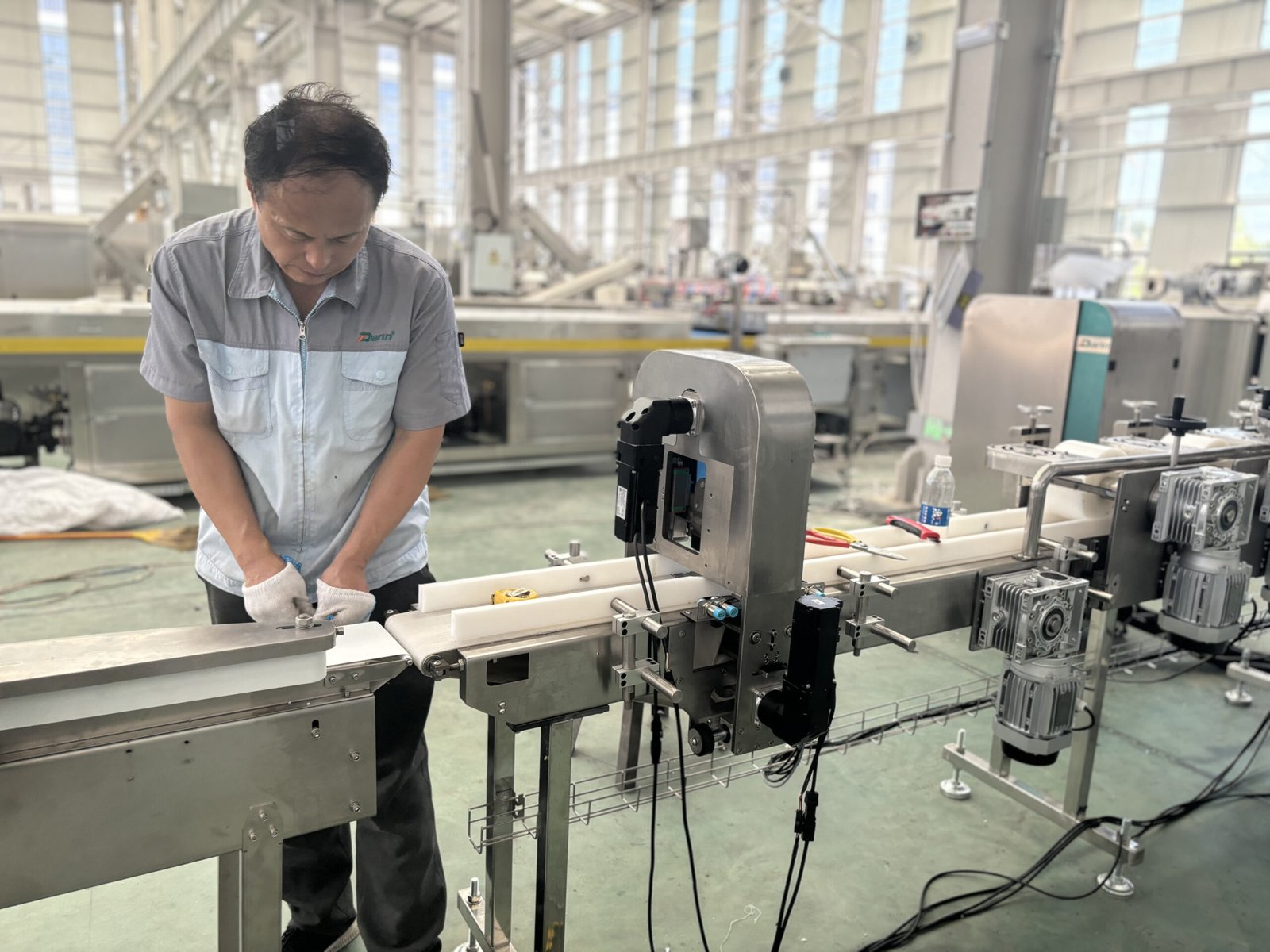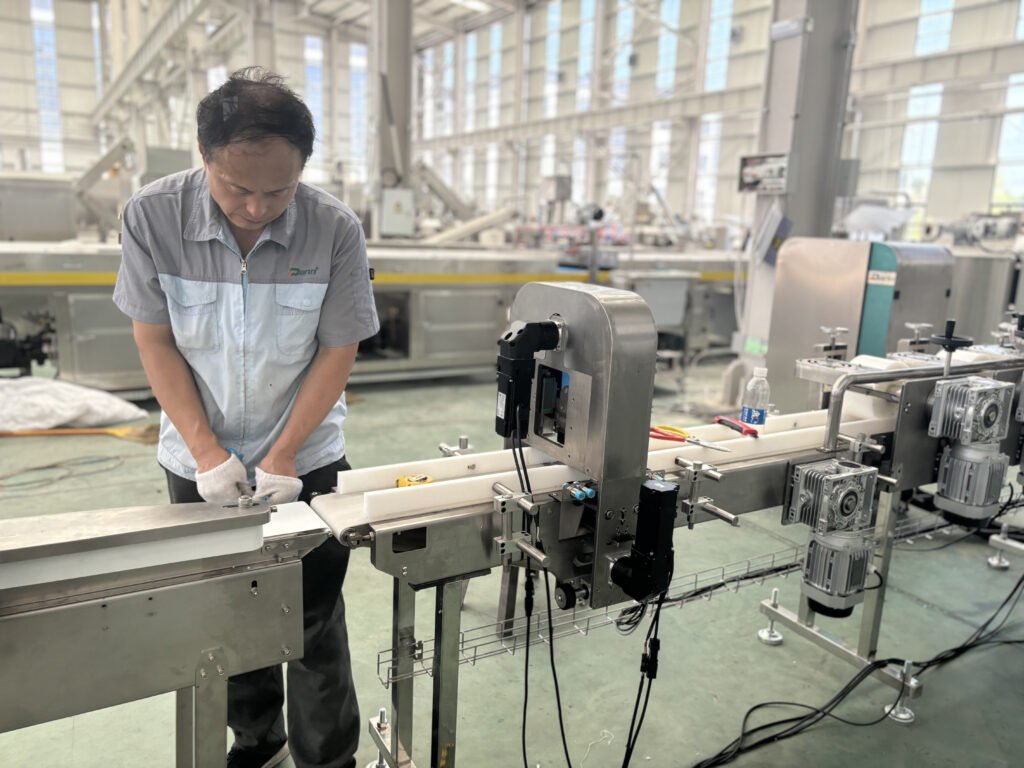
Dog food machine production is a complex process that involves mixing, extruding, drying, and coating multiple ingredients into a consistent, high-quality product. However, manufacturers often face recurring challenges such as machine blockages, inconsistent kibble size, ingredient segregation, nutrient degradation, and equipment wear. If left unresolved, these issues can reduce production efficiency, increase downtime, compromise product quality, and elevate maintenance costs. Thankfully, by understanding the root causes and applying practical solutions—including precise machine calibration, preventative maintenance, real-time monitoring, and staff training—manufacturers can efficiently overcome these hurdles. This guide dives deep into common production issues and how to fix them.
The most common challenges in dog food machine production include ingredient segregation, machine clogging, kibble size inconsistency, nutrient loss, and mechanical wear. These can be effectively resolved through regular calibration, preventive maintenance schedules, ingredient pre-processing, real-time monitoring systems, and skilled operator training to ensure smooth and efficient production.
If you’ve experienced production bottlenecks, machine failures, or inconsistent dog food quality, keep reading—this article will offer actionable solutions to resolve them.
Dog food machine blockages are mostly caused by improper ingredient moisture content.True
High or uneven moisture levels can cause ingredients to clump or stick, leading to blockages in feeders and extruders. Proper moisture control prevents clogging.
Understanding the Root Challenges in Dog Food Machine Production
Dog food manufacturing isn’t just about mixing ingredients and extruding them; it's an intricate process influenced by ingredient characteristics, machine design, and operational parameters. The most frequently encountered problems stem from improper raw material handling, equipment misalignment, lack of real-time process control, and inconsistent maintenance schedules. Below, we’ll break down the primary challenges manufacturers face.
Challenge #1: Ingredient Segregation and Inconsistent Mixing
Problem:
Inconsistent mixing or segregation of ingredients (especially powders, grains, and minor ingredients) leads to uneven nutrient distribution, affecting product quality and regulatory compliance.
Solution:
- Install Pre-Mixers with Homogenizers: These eliminate segregation by breaking down clumps and ensuring uniform ingredient distribution.
- Use Gravimetric Feeders: Precise feeding prevents ingredient separation.
- Implement Particle Size Standardization: Grinding ingredients to similar sizes reduces segregation.
| Solution | Impact |
|---|---|
| Pre-mixers with homogenizers | Ensures even distribution of ingredients |
| Gravimetric feeders | Accurate ingredient proportioning |
| Standardized particle size | Reduces settling and segregation |
Challenge #2: Machine Blockages and Feed Interruptions
Problem:
Extruders and feeders can frequently clog due to sticky ingredients, excessive moisture, or incorrect machine speed, leading to downtime.
Solution:
- Moisture Control Systems: Inline moisture analyzers adjust feed moisture in real-time.
- Feed Speed Adjustment: Programmable control systems can automatically optimize feeder speed.
- Ingredient Pre-Conditioning: Pre-drying or oil application reduces stickiness.
Key Chart: Causes of Machine Blockage and Solutions
| Cause of Blockage | Recommended Solution |
|---|---|
| High ingredient moisture | Inline moisture control systems |
| Sticky ingredients (fats, proteins) | Pre-conditioning (drying, oil application) |
| Incorrect feeder/extruder speed | Programmable speed control |
Challenge #3: Kibble Size and Shape Inconsistency
Problem:
Uneven kibble size/shape results from die wear, incorrect cutting blade settings, or improper dough consistency, leading to product rejection or customer complaints.
Solution:
- Regular Die Maintenance: Schedule die inspection and replacement based on production hours.
- Adjustable Cutting Blade Mechanism: Fine-tune blade sharpness and speed.
- Control Dough Moisture and Viscosity: Automated moisture analyzers ensure proper consistency.
| Variable | Solution |
|---|---|
| Die wear | Inspect and replace regularly |
| Blade sharpness/speed | Routine checks and adjustments |
| Dough consistency | Real-time moisture analysis and adjustment |
Challenge #4: Nutrient Degradation During Extrusion
Problem:
High temperatures and mechanical stress in extruders can degrade sensitive nutrients like vitamins, amino acids, and fatty acids.
Solution:
- Use Vacuum Coating Systems: Add vitamins and oils after extrusion at lower temperatures.
- Optimize Extruder Settings: Balance temperature and pressure to minimize nutrient breakdown.
- Nutrient Overages: Add slightly more vitamins to compensate for processing loss.
Table: Nutrient Degradation Solutions
| Nutrient at Risk | Risk Factor | Solution |
|---|---|---|
| Vitamin A | Heat-sensitive | Apply via vacuum coater post-extrusion |
| Omega-3 fatty acids | Oxidation & heat | Stabilized oils, post-process application |
| Amino acids (Lysine) | High temperature | Adjust formula to compensate for loss |
Challenge #5: Equipment Wear and Maintenance Downtime
Problem:
Continuous production without adequate maintenance leads to wear in critical machine parts—dies, screws, blades—causing breakdowns.
Solution:
- Preventive Maintenance Programs: Implement detailed schedules for inspection and part replacement.
- Spare Parts Inventory Management: Keep essential components in stock.
- Operator Training Programs: Equip staff to recognize early wear signs.
| Maintenance Element | Frequency | Benefit |
|---|---|---|
| Screw/die inspection | Every 500-800 hours | Prevents breakdowns |
| Blade sharpening | Monthly | Consistent kibble cutting |
| Sensor calibration | Quarterly | Accurate process monitoring |
Challenge #6: Energy Consumption and Production Inefficiency
Problem:
High power consumption and inefficient processing raise operational costs and carbon footprint.
Solution:
- Upgrade to Energy-Efficient Motors and Drives: Use variable frequency drives (VFDs) to control motor speed based on demand.
- Optimize Drying Systems: Integrate heat recovery systems and moisture sensors to prevent over-drying.
- Monitor Overall Equipment Effectiveness (OEE): Analyze machine availability, performance, and quality output to identify inefficiencies.
Comparative Chart: Traditional vs. Energy-Efficient Systems
| Aspect | Traditional System | Energy-Efficient System |
|---|---|---|
| Motor Control | Constant speed | VFD-controlled, variable speed |
| Drying Method | Continuous heating | Moisture sensor-based control with heat recovery |
| Power Consumption | High | Reduced by up to 25% |
Real-World Case Study: Solving Machine Blockages and Downtime in a 5,000 Tons/Year Plant
One client faced constant machine blockages during high-fat dog food production. After evaluating moisture levels and ingredient flow, we implemented:
- Inline Moisture Sensors: Adjusting moisture in real-time reduced ingredient clumping.
- Feeder Speed Automation: Optimized feed rates according to ingredient properties.
- Regular Preventive Maintenance: Cleaning and inspecting dies every 400 hours.
Result: Blockages reduced by 70%, and downtime decreased by 40% within three months.
Conclusion
Dog food machine production is fraught with challenges ranging from ingredient segregation and machine clogging to nutrient loss and equipment wear. However, manufacturers can address these obstacles efficiently through smart automation, regular maintenance schedules, real-time monitoring, and operator training. Applying these strategies not only ensures smoother operations but also results in higher-quality, consistent dog food products that meet regulatory standards and customer expectations.
Contact Us for Tailored Solutions
Facing persistent challenges in your dog food production line? Contact us today for customized machinery solutions, technical support, and expert advice to enhance efficiency, product quality, and operational profitability. Let’s optimize your production together!
FAQ
Q1: What are the most common challenges in dog food machine production?
A1: The most common challenges in dog food machine production include inconsistent product quality, machine overheating, ingredient blockage, wear and tear of machine parts, and frequent downtime due to maintenance needs. These issues can affect production efficiency and product consistency if not addressed promptly.
Q2: How can I prevent ingredient blockages in dog food machines?
A2: Ingredient blockages often result from using raw materials that are too moist or sticky. To prevent this, ensure ingredients are properly ground and dried to the recommended moisture levels. Regular cleaning of feeding ports and monitoring ingredient flow rates also helps reduce the risk of blockages.
Q3: Why do dog food machines overheat, and how can it be solved?
A3: Overheating typically occurs due to overloading, poor ventilation, or inadequate lubrication. To solve this, operate within the machine’s capacity, ensure ventilation systems are functioning, and regularly lubricate moving parts. Using quality cooling systems and conducting routine inspections also help prevent overheating.
Q4: How can I reduce downtime during dog food production?
A4: Reducing downtime requires proactive maintenance schedules, having spare parts readily available, and training operators on troubleshooting techniques. Implementing predictive maintenance technology to detect wear and tear early can minimize unexpected breakdowns and production halts.
Q5: What are the best practices to maintain product quality in dog food machine production?
A5: Maintaining product quality involves using high-quality raw materials, ensuring precise temperature and pressure control, and calibrating the machine regularly. Consistent monitoring and quality checks throughout the production process help ensure the final product meets safety and nutritional standards.
References
- Dog Food Processing Technology Overview - https://www.petfoodindustry.com/articles/8264-dog-food-processing-technology-overview - Pet Food Industry
- Best Practices in Pet Food Production - https://www.aibinternational.com/en/insights/best-practices-pet-food-production - AIB International
- How to Troubleshoot Pet Food Machines - https://www.foodprocessing.com/machinery-maintenance/article/11222263/how-to-troubleshoot-pet-food-machines - Food Processing
- Predictive Maintenance in Food Manufacturing - https://www.plantengineering.com/articles/predictive-maintenance-food-manufacturing - Plant Engineering
- Reducing Downtime in Production Lines - https://www.manufacturing.net/operations/article/13246416/reducing-downtime-in-production-lines - Manufacturing.net
- Importance of Quality Control in Pet Food - https://www.petfoodprocessing.net/articles/14788-importance-of-quality-control-in-pet-food - Pet Food Processing
- Machine Lubrication Best Practices - https://www.machinerylubrication.com/Read/288/machine-lubrication-best-practices - Machinery Lubrication
- Key Considerations for Pet Food Ingredients - https://www.nutraceuticalbusinessreview.com/news/article_page/Key_considerations_for_pet_food_ingredients/202544 - Nutraceutical Business Review
- Ventilation Solutions for Food Processing Facilities - https://www.foodengineeringmag.com/articles/99801-ventilation-solutions-for-food-processing-facilities - Food Engineering
- Enhancing Efficiency in Pet Food Production - https://www.petfoodindustry.com/articles/9204-enhancing-efficiency-in-pet-food-production - Pet Food Industry










